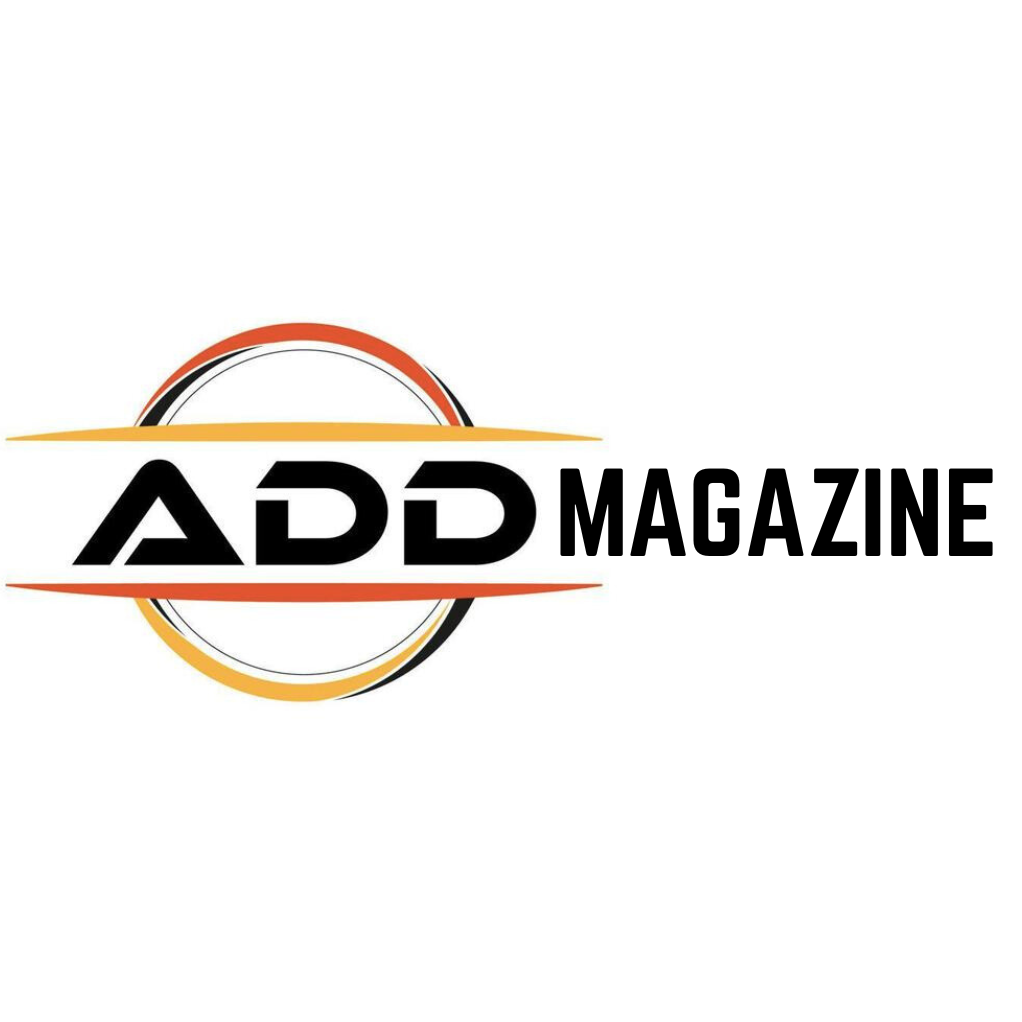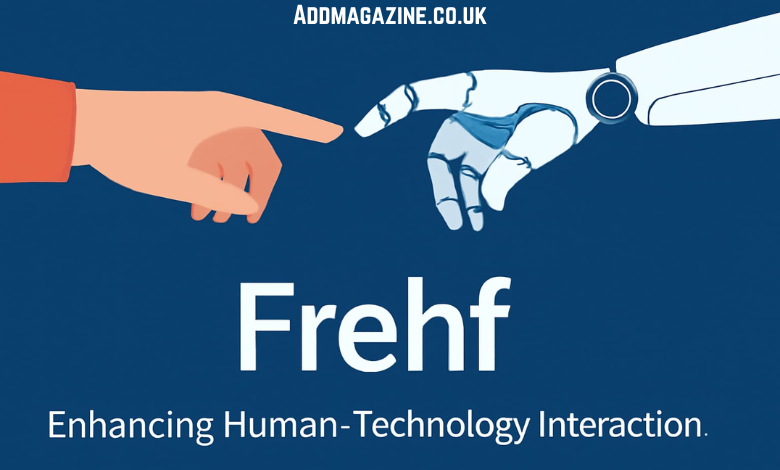In an age where technology continues to shape every aspect of our lives, a new concept called Frehf has emerged, promising to redefine how we interact with digital platforms. Frehf is more than just a tool or a technology; it is an innovative approach that aims to bridge the gap between human behavior and technological systems, fostering a space where communication, creativity, and collaboration can flourish.
What is Frehf?
Frehf is a forward-thinking concept that focuses on enhancing the way humans engage with technology. It integrates advanced methods and tools designed to enable seamless communication between individuals and digital platforms. Unlike traditional systems where interaction can feel mechanical or rigid, Frehf emphasizes an intuitive approach that aligns more closely with natural human behaviors, making technology feel more like an extension of ourselves.
At its core, Frehf seeks to break down the barriers that often hinder effective engagement with technology. Whether it’s the complexity of interfaces, the limitations of current communication systems, or the often-frustrating disconnection between humans and machines, Frehf provides an alternative that prioritizes ease of use, accessibility, and efficiency.
The Integration of Human Intuition and Technology
One of the main features of Frehf is its ability to blend human intuition with cutting-edge technological solutions. Traditional technology often requires users to adapt their behaviors to fit the system. For example, learning how to use a new software tool or app can involve a steep learning curve, where users have to memorize commands, interfaces, or processes. Frehf aims to turn this paradigm on its head by creating a system that adapts to the user’s natural interactions and behaviors.
This approach focuses on understanding the way people think, behave, and communicate, then incorporating those insights into the design of digital tools. Whether it’s through voice recognition, gesture-based controls, or predictive algorithms that anticipate user needs, Frehf is built to make technology feel more natural and intuitive.
By harnessing these insights, Frehf can create digital environments where users feel more in control, more comfortable, and more engaged with the technology they are using. This can lead to more effective communication, higher productivity, and enhanced creativity.
Breaking Down Barriers to Effective Engagement
One of the primary goals of Frehf is to eliminate the common barriers that impede effective human-tech interaction. These barriers often come in the form of complex user interfaces, lack of personalization, or simply the difficulty in translating human intentions into digital actions.
For example, think about the last time you tried to use a new software tool or app. Often, there’s a learning period during which you have to familiarize yourself with the interface and its various functions. In many cases, this process can feel frustrating and time-consuming, leading to a lack of enthusiasm and even avoidance of certain technologies.
Frehf aims to solve this issue by creating a system that adapts to its users. Instead of making users fit the system, Frehf allows the system to adapt to how individuals think and interact. This results in more efficient and effective communication, as users don’t have to spend time learning how to operate the tool – the tool simply works with them.
Fostering Creativity and Growth
Another significant advantage of Frehf is its potential to foster growth, both personally and professionally. By providing a platform that allows users to focus on their creative processes rather than on navigating complex systems, Frehf helps individuals and teams engage in a more productive and fulfilling way.
In the workplace, this could mean more efficient collaboration on projects, with fewer technical barriers to hinder progress. Frehf can help teams work together more effectively by facilitating seamless communication and collaboration, whether they are across the room or on opposite sides of the world. With Frehf’s emphasis on intuitive interaction, creative ideas can flow more freely, and problem-solving can become a more collaborative and dynamic process.
On a personal level, Frehf can also enhance how individuals engage with technology in their day-to-day lives. By providing a system that responds to human behavior, Frehf can make everyday tasks more enjoyable and less frustrating. For instance, it could help people manage their time better by predicting tasks and offering suggestions, or assist in learning new skills by providing personalized guidance based on individual learning styles.
Applications of Frehf in the Real World
Frehf’s potential applications span across a variety of fields and industries, with its influence likely to extend well beyond the boundaries of any single sector. In healthcare, Frehf could revolutionize patient-caregiver interactions, making it easier for medical professionals to communicate with patients and for patients to access necessary information. And in education, Frehf could be used to personalize learning experiences, adapting to students’ needs and helping them to better absorb and understand complex material.
In business, Frehf could streamline operations by enhancing communication between teams, improving collaboration on projects, and automating routine tasks to free up time for more strategic thinking. The creative industries could also see immense benefits, as Frehf’s intuitive platform could allow artists, designers, and writers to focus on their work without being hindered by technical challenges.
The possibilities are vast, and as Frehf continues to evolve, its influence will undoubtedly become more pronounced, touching even more aspects of our daily lives.
Benefits of Frehf and Its Impact Across Various Domains
Frehf is a groundbreaking concept designed to transform human interaction with technology. Its potential benefits extend far beyond mere convenience, with the promise of shaping the future of communication, collaboration, and productivity. By breaking down traditional barriers in human-tech interaction, Frehf brings about significant improvements in several areas. Below, we will explore the various advantages of Frehf and how it impacts different sectors and aspects of our daily lives.
1. Enhanced Human-Technology Interaction
One of the most immediate benefits of Frehf is its ability to simplify and enhance the interaction between humans and technology. Traditional technologies often require users to adapt to specific interfaces and systems, which can be intimidating, complex, and cumbersome. Frehf, on the other hand, emphasizes human intuition, making digital platforms feel more natural.
- User-Friendly: Frehf adapts to the user’s natural behavior, eliminating the need for complicated instructions or learning curves. It provides a more intuitive interface where users don’t need to focus on navigating the system but can focus on their task at hand.
- Increased Accessibility: For individuals who might struggle with traditional tech interfaces—such as older adults or those with disabilities—Frehf offers a more accessible and inclusive approach. Voice recognition, gesture controls, and predictive algorithms can cater to diverse needs, making technology more inclusive for everyone.
2. Improved Creativity and Innovation
Frehf fosters an environment where creativity can thrive. By removing the technical barriers that typically hinder creative expression, Frehf allows users to focus on their ideas and goals rather than the technical challenges that often arise in the process of executing those ideas.
- Creative Freedom: Artists, designers, and creators no longer have to worry about learning complex software or getting bogged down by the limitations of traditional tools. Frehf empowers users to express themselves without friction, enabling them to channel their full creative potential.
- Innovation in Collaboration: The intuitive nature of Frehf can also facilitate better collaboration among teams. Instead of wasting time learning tools, individuals can focus on sharing ideas and brainstorming. This can significantly accelerate the pace of innovation, as teams can work together more seamlessly, often from different locations.
3. Boosting Productivity and Efficiency
By streamlining communication and reducing the time spent on navigating digital systems, Frehf enhances productivity for both individuals and teams. The more intuitive interaction with technology results in less wasted time, fewer errors, and smoother processes.
- Faster Decision-Making: With the predictive capabilities of Frehf, systems can anticipate user needs, suggest relevant actions, or automate repetitive tasks. This leads to quicker decisions, enabling users to make informed choices faster without having to sift through overwhelming amounts of data or steps.
- Automation: Many routine tasks, such as data entry, scheduling, or system updates, can be automated, freeing up valuable time for users to focus on more strategic or creative work. This creates a more efficient workflow that eliminates unnecessary steps and optimizes performance.
- Increased Accuracy: The seamless nature of Frehf can also reduce the number of errors that are typically made in systems with complex interfaces. Predictive systems and machine learning algorithms ensure that actions are executed with greater precision.
4. Personalization and Customization
Frehf stands out because of its ability to personalize interactions. It can adapt to individual users’ preferences, needs, and habits, allowing them to engage with technology in a way that feels truly tailored to them.
- Personalized User Experience: Frehf can learn from user behavior, recognizing patterns, preferences, and interests, which helps it provide more relevant suggestions, content, or actions. Whether it’s personalizing a digital assistant’s responses or curating content recommendations, Frehf offers a user experience that is unique to each individual.
- Adaptability Across Devices: As Frehf becomes integrated across various platforms—whether mobile, desktop, or wearable devices—it ensures a consistent and personalized experience across all devices. Users won’t need to relearn how to interact with their devices; everything remains intuitive and personalized.
5. Improved Communication in Professional Settings
In the workplace, communication is key to success. Frehf significantly improves how teams communicate, collaborate, and engage with technology, driving productivity and innovation.
- Remote Collaboration: With the rise of remote work, tools that enable seamless communication and collaboration are essential. Frehf facilitates communication in a way that feels just as natural as an in-person conversation, bridging the gap between team members regardless of location. Whether it’s through video conferencing, document sharing, or instant messaging, Frehf enables more fluid and effective communication.
- Project Management: Frehf’s ability to streamline tasks, integrate scheduling, and track progress can make project management more effective. Teams can focus on brainstorming and problem-solving, while Frehf takes care of organizing and optimizing workflows, making sure everyone stays on track without missing deadlines.
6. Frehf’s Impact on Different Industries
Frehf’s innovative approach has the potential to revolutionize a wide range of industries by improving human-tech interactions and transforming existing workflows.
Healthcare
In healthcare, Frehf can make patient-caregiver interactions more efficient. By creating more intuitive systems for managing patient data and improving communication between healthcare professionals, Frehf can enhance the quality of care.
- Telemedicine: The pandemic highlighted the need for effective remote consultations. Frehf’s intuitive interfaces could make telemedicine platforms more accessible and easier to use for both healthcare providers and patients.
- Medical Research: Researchers could use Frehf’s tools to better manage and analyze vast amounts of data, speeding up breakthroughs in medical science.
Education
In the education sector, Frehf could revolutionize how students interact with learning tools. With personalized, intuitive learning platforms, Frehf can enhance the learning experience, especially for students with different learning styles.
- Interactive Learning: Frehf can create immersive, engaging, and interactive learning environments that adapt to students’ needs, allowing them to learn at their own pace.
- Teacher-Student Communication: Teachers could use Frehf to communicate more effectively with students, providing real-time feedback and individualized support.
Business and Enterprise
In business, the implementation of Frehf could lead to major improvements in customer service, marketing, and operations.
- Customer Support: With intuitive chatbots and customer service platforms powered by Frehf, businesses can provide faster and more personalized support to their customers.
- Sales and Marketing: Frehf can optimize sales funnels by analyzing customer behavior and personalizing recommendations, leading to better conversion rates and customer satisfaction.
Entertainment and Media
Frehf can change the way content is created and consumed. Whether in the form of interactive games, immersive experiences, or personalized content recommendations, Frehf offers vast potential in the entertainment industry.
- Content Creation: Creators can use Frehf’s technology to streamline the content creation process, reducing time spent on technical aspects and allowing them to focus more on creativity.
- Audience Engagement: Personalized content and experiences can enhance audience engagement, providing users with tailored experiences that align with their preferences.
7. The Future of Frehf
As Frehf continues to evolve, it is likely that its capabilities will grow exponentially. Integrations with emerging technologies such as artificial intelligence, augmented reality (AR), virtual reality (VR), and the Internet of Things (IoT) will further enhance its potential.
AR/VR Applications:
With the rise of immersive experiences, Frehf could integrate AR/VR to provide users with real-world simulations that are intuitive and easy to navigate, further blurring the line between digital and physical worlds.
AI Integration:
As AI continues to improve, Frehf could offer even more personalized experiences, learning from every interaction to continuously improve its understanding of user behavior and preferences.
Conclusion
Frehf is not just another technological advancement; it is a paradigm shift in how we think about and interact with digital systems. By combining the best aspects of human behavior with the power of cutting-edge technology, Frehf creates an environment where creativity, communication, and collaboration can thrive.
As we continue to explore the full potential of Frehf, it is clear that this concept has the power to revolutionize various industries, from healthcare to education, business, and beyond. The goal is not just to use technology, but to make technology work for us in a way that feels natural, intuitive, and productive.
As Frehf evolves, its impact on the way we live and work will likely continue to grow, helping to create a more connected and efficient world. Through its unique approach, Frehf has the potential to break down the barriers between humans and technology, offering new opportunities for growth, creativity, and engagement.




